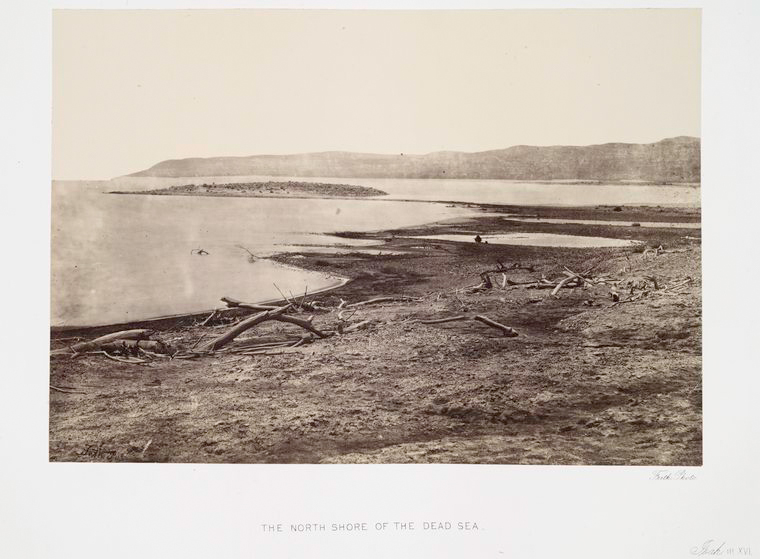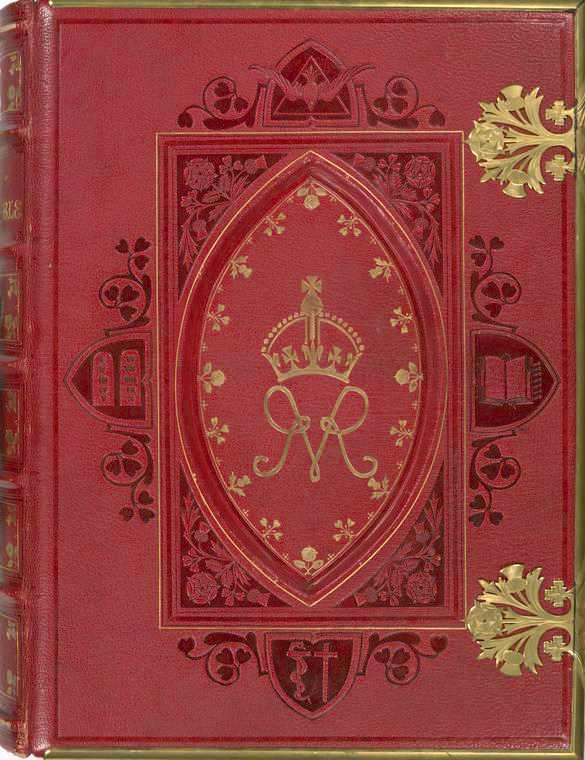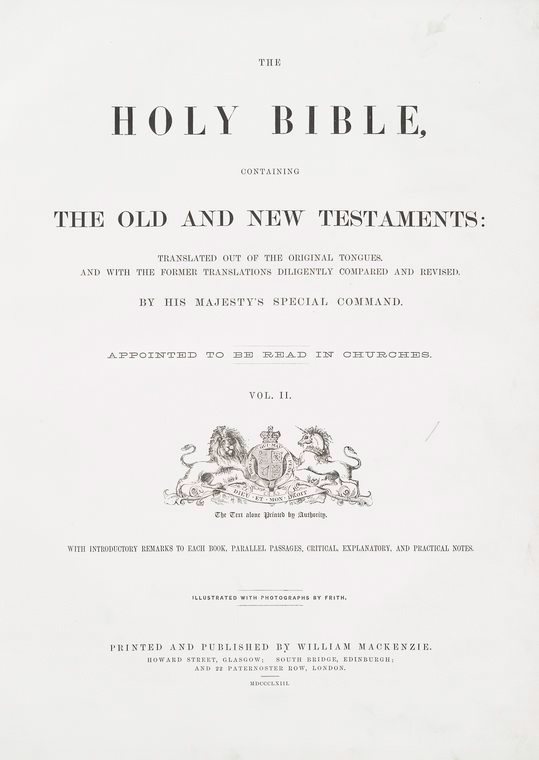A Photographic Bible Fit for a Queen

printed in The Queen's Bible (1862-63) 
Between 1856 and 1860, the Englishman Francis Frith (1822-98) took three trips to the Middle East to take photographs. The region’s dry heat made the laborious collodion process, where glass plate negatives had to be sensitized, exposed, and developed while still wet (hence its more common name, “wet plate”), exceedingly difficult. Despite this challenge, Frith managed to build up an archive of landscape views that played a central role in establishing his career as England’s most commercially successful photographer of the nineteenth century.
Frith quickly learned that Victorians were eager to own copies of his photographs of the Holy Land. To meet popular demand, he opened his own publishing house, F. Frith & Co., in the late 1850s. Frith made his photographs available in various formats that suited different budgets, from inexpensive stereographs to multi-volume books illustrated with tipped-in albumen prints. Selections from the Middle Eastern photographs illustrated slightly differing books such as Egypt and Ethiopia, Photographed and Described by Francis Frith (1858-59), Egypt, Nubia and Ethiopia (1862) and Sinai and Palestine (1862). All of these books are currently on view in the Library’s exhibition, Public Eye: 175 Years of Sharing Photography, alongside scenic views of European locations by Frith’s company.


Also on display is the Photography Collection’s rare copy of The Queen’s Bible (1862-63), one of the most deluxe publications illustrated with Frith’s photographs. Only 170 copies were produced of this sumptuous volume bound in red Moroccan leather, embossed with royal insignia, and enclosed with ornate brass clasps. Frith dedicated the two-volume Bible including the Old and New Testaments to Queen Victoria, who remained in mourning after the recent death of her beloved husband Prince Albert. The royal couple had been enthusiastic supporters of photography in England from the beginning; in 1853, they became founding patrons of the Photographic Society Club (an early album of which is also on view in the exhibition.) As a contributor to the British journal Photographic Notes wrote in 1862: “Amidst the universal grief felt at the death of the Prince, photographers have their own peculiar additional regret, that their art has lost one of its warmest admirers and patrons.” Although The Queen’s Bible certainly aimed at the high, even royal, end of the market, it comes from a moment when English photography was becoming less of an elite pastime thanks to a burgeoning network of communities, clubs, and publications exchanging ideas about the medium. If the Bible housed Frith’s photographs in religious gravitas, the inexpensive stereograph offered a different kind of experiential richness in its three-dimensional image of distant lands.
This Bible and other books and photographs by Frith are on view in Public Eye: 175 Years of Sharing Photography (December 12, 2014-September 5, 2015), in the Stephen A. Schwarzman Building’s Gottesman Exhibition Hall.
Further reading
Bartram, Michael. The Pre-Raphaelite Camera: Aspects of Victorian Photography. Boston: Little, Brown, 1985.
Nickel, Douglas R. Francis Frith in Egypt and Palestine: A Victorian Photographer Abroad. Princeton: Princeton University Press, 2004.
Nir, Yeshayahu. The Bible and the Image: The History of Photography in the Holy Land, 1839-1899. Philadelphia: University of Pennsylvania Press, 1985.
Prodger, Phillip. Darwin’s Camera: Art and Photography in the Theory of Evolution. New York: Oxford University Press, 2009.
Seiberling, Grace. Amateurs, Photography, and the Mid-Victorian Imagination. Chicago: University of Chicago Press, 1986.
All items pictured can be found in the Miriam and Ira D. Wallach Division of Art, Prints and Photographs and the images are copyright of New York Public Library.
Read E-Books with SimplyE
 With your library card, it's easier than ever to choose from more than 300,000 e-books on SimplyE, The New York Public Library's free e-reader app. Gain access to digital resources for all ages, including e-books, audiobooks, databases, and more.
With your library card, it's easier than ever to choose from more than 300,000 e-books on SimplyE, The New York Public Library's free e-reader app. Gain access to digital resources for all ages, including e-books, audiobooks, databases, and more.
If you don’t have an NYPL library card, New York State residents can apply for a digital card online or through SimplyE (available on the App Store or Google Play).
Need more help? Read our guide to using SimplyE.